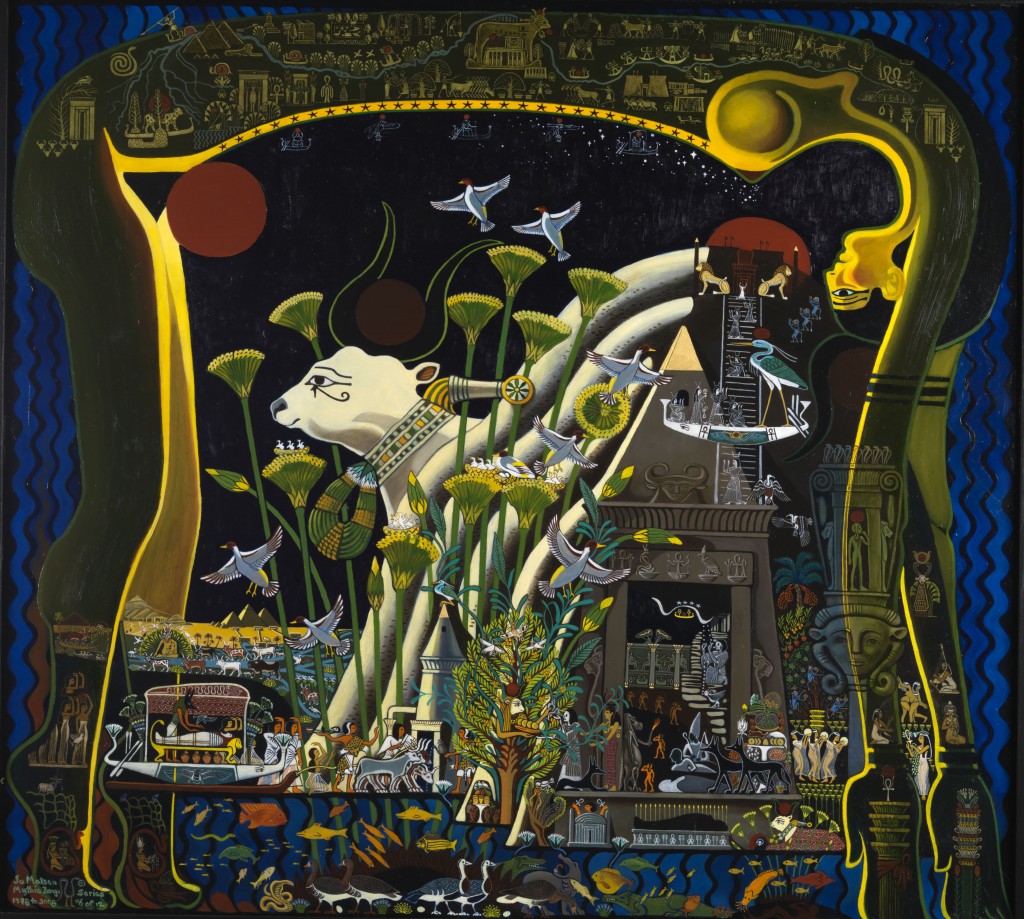The ancient Egyptian culture continued to use a uniform iconography for 4000 years, a record unmatched by any other. The mountains in the West, on the west bank of the Nile river, were an essential part of this belief system. The sun sets in the west, and the mountains on the west bank of the Nile made a natural burial for the sun, and for society. The Valley of the Kings, and many of the early pyramids are found on the west bank of the Nile. When burial on the west bank was not realistic, artificial mountains, in the form of pyramids, were created, and it is not surprising that Hathor, the cow-goddess, was seen as integral with the mountain and with the transition of the newly dead to their afterlife. Here we see Hathor in her cow form emerging from her sacred mountain, as frequently depicted in Egyptian wall paintings. The mountain is united with a pyramid, as both are forms of the same mother who both gives birth and receives the dead. We can see a burial procession approaching from the left, and within the tomb can be seen the udder of the cow, which feeds the dead. Hathor also appears in the food-laden tree to the left of the pyramid entrance. The sky is formed by another female figure, Nut, the sky, which is seen giving birth to the life-giving sun on the left, and swallowing it at sunset in the west on the right. Her milk forms the stars. Within her body is the boat journey taken by the dead, here represented by the temples lining the Nile River. The Nile is also seen at the bottom of the picture in its life-giving form.
Jo Matsen: Mythic Images
The Mother in the Mountain

